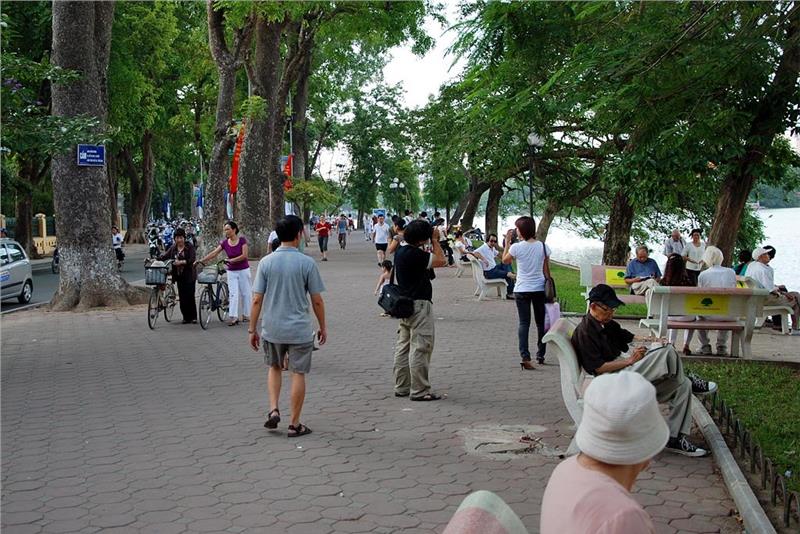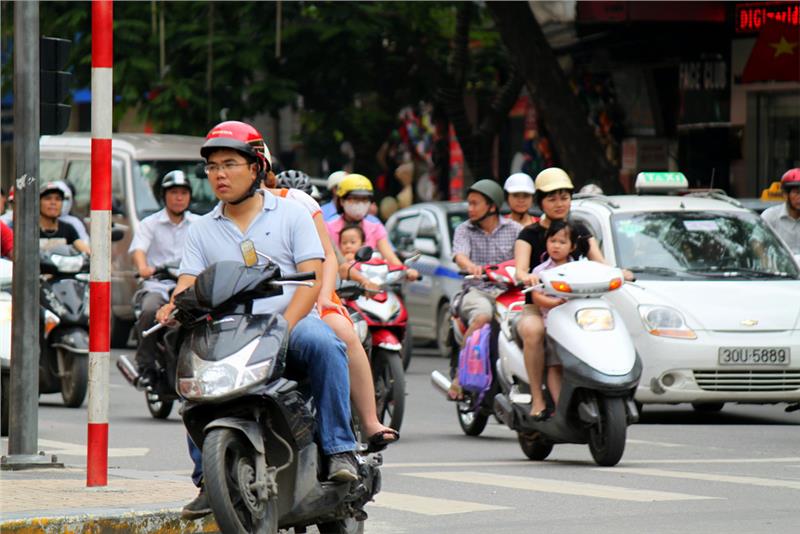The lifestyle of Vietnamese people is formed based on economic, political, and geographical conditions in the process of formation and development of Vietnamese people. Therefore, Vietnam's lifestyle also embodies the characteristics of traditional ethnic cultures and features tradition of Vietnamese. The most outstanding characteristics of the lifestyle of Vietnamese people are patriotism, cohesiveness in social relationships, solidarity in family, clan, and village ties, philanthropic spirit of tolerance and humanism. Characteristics of traditional Vietnamese thinking depend much on sentiment, not argument. The Vietnamese often take ethics as the basis of behaviors in relations between people and people.
Between region and region, Vietnamese lifestyle differs from each other. There are also differences between the young and the old, but many aspects of life remain unchanged. Like people in other Asian countries, Vietnamese people are well known for being friendly, kind, hospitable, and industrious. Vietnamese people highly respect the importance of family in their life. At present, there are two kinds of typical family existing in Vietnam, including extended family and nuclear family. In extended family, there are more than two generations living in a house: grandparents, parents, children, and grandchildren. Meanwhile, in nuclear family, there are parents and children living together. In modern life in Vietnam, genders are equal. For married couples, both husband and wife go to work, while their parents look after their children who might stay at home or go to nursery schools, or daycare centers. According to Vietnamese tradition, the old generation is highly respected by the young one. Young people are thought to be obedient and have good behaviors toward old people. This characteristic of Vietnamese lifestyle is mostly influenced by Confucianism.

Being a society mainly based on agriculture, most of people live in countryside from lowlands, mountainous areas and the coastal line. In the lowlands, the countryside of Vietnam is characterized by bamboo-hedged villages, beautiful green paddies, and friendly farmers in their conical hats. The lifestyle of Vietnamese people in the countryside majorly reflects the traditional life in Vietnam. Being an agricultural nation, Vietnamese villagers survive by farming, raising livestock and making handicraft with the habit of working together and being kind to each other. In each Vietnamese village, there is a communal cultural house where villagers often organize events with the participation of everyone in that village. Those events can be held to worship the village god or commemorate celebrities. In some parts of Vietnam, villages are formed by stilt houses which are built in mountainous Northwest areas to avoid dangerous animals, or built above the ground to avoid floods in Southern Vietnam. Vietnamese people are very hard-working and patient, especially in Central Vietnam where the local people have to suffer seasonal natural disasters, and harsh conditions. Thus, a large number of people in the region choose to work in industrial zones or in big cities, instead of working in the fields.

Meanwhile, Vietnam city life is not as simple and traditional as that in the countryside. In cities, life is thought to be modern, but complicated. Here is the convergence of people from all regions. They come here to earn their living, and better their children life. The cost of living in big cities is high, thus, city-dwellers who have low incomes have to work hard, even do part-time jobs. The inhabitants in city often do exercises in parks near their houses which are large private houses, apartments, or small rental houses with modern equipment. The lifestyle in city is influenced by industrialization, modernization, and global integration of Vietnam. The lifestyle of Western country also affects in Vietnam. Today, Vietnamese women just wear Ao Dai in special occasions; they choose fashionable clothes for daily costumes, such as jeans and T-shirt.

To Vietnamese people, education plays an important role in their life. Before going to primary school, Vietnamese children have to join preschools for a few years. At the age of six, they start to go to primary school. Here, they are taught to read and write. At school, they are educated with strict rules. Teachers are respected as pupils’ parents. Students aged 11 go to secondary school until the age of 15. After passing an exam, they can study at high school. During the time from primary school to high school, Vietnamese students have to wear uniforms which vary school by school. To enter a university or college in Vietnam, students need to pass a national exam. Instead of studying at universities or colleges, Vietnamese students can finish their high school, and then register to study at technical or vocational institutes in which they can learn a specific profession such as mechanics, agriculture, or electronics, etc.
In short, Vietnamese lifestyle varies region by region. Each part of the country has its own features of culture from religions to customs practiced. Life of Vietnamese people differs from city to countryside, from lowlands to mountainous areas, and coastal line. All of them create unique cultural identity of Vietnam.
